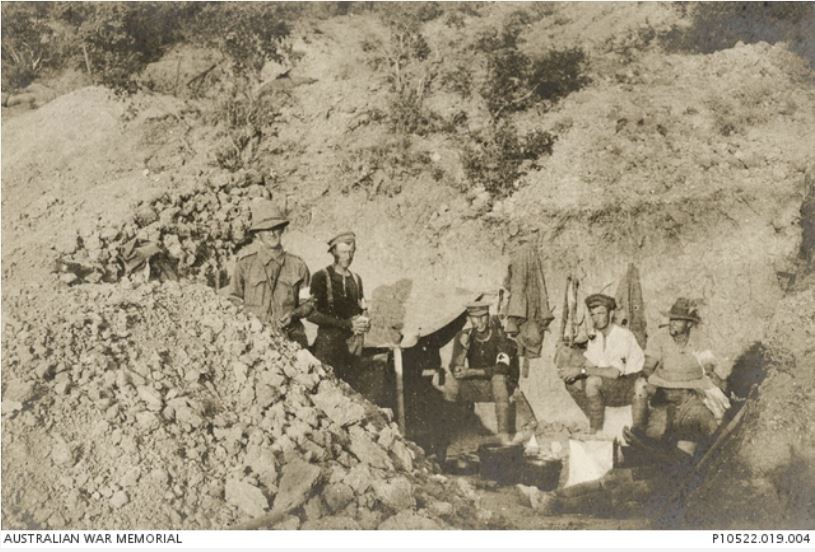Difference between revisions of "2nd Australian Light Horse Field Ambulance"
From Our Contribution
(→Patients) |
(→Patients) |
||
| Line 28: | Line 28: | ||
===Patients=== | ===Patients=== | ||
| − | * [[Fritz Robert Jaentsch]] 14 Sep 1915 | + | * † [[Fritz Robert Jaentsch]] 14 Sep 1915 |
===Individual Honours=== | ===Individual Honours=== | ||
Latest revision as of 20:06, 30 August 2021
 2nd LHR stretcher bearers in Victoria Gully AWM P10522.004 | |
 Shoulder patch | |
Brief History
The 2nd Light Horse Brigade was raised as part of the 2nd Contingent of the AIF, which was hastily put together at the beginning of September 1914. Units (including the Field Ambulance) were raised throughout September and October, and the brigade embarked for the Middle East, departing from Sydney in December 1914. Arriving in Egypt, in February 1915, training was undertaken at Maadi Camp, during which further drafts of reinforcements were received from Australia.
An ambulance consisted of two sections, the Mobile and the Immobile. The Mobile Section travel with its brigade into combat, where it would establish a Dressing Station. It use stretchers or carts to retrieve the wounded and transport them to the Dressing Station. The Immobile Section established and operated a Receiving Station, which received the wounded the Dressing Station sent on. The ambulance's surgeons would operate on the wounded at the Receiving Station. From the Receiving Station, the sick and wounded would go first to the Casualty Clearing Station and ultimately to a Base Hospital. All officers of the ambulance were medical doctors or surgeons. Dental units were often attached to the ambulance as well.
The mainstay of the transport section was the sand cart. It featured wide steel rims and was designed be able to carry three stretchers over soft sand. Six horses or mules provided the motive power. The sand cart was poorly suited to operating on the hard, rough ground of Palestine and Syria, and breakdowns were frequent. The mainstay of the transport section was the sand cart. It featured wide steel rims and was designed be able to carry three stretchers over soft sand. Six horses or mules provided the motive power. The sand cart was poorly suited to operating on the hard, rough ground of Palestine and Syria, and breakdowns were frequent.
The brigade first saw action while serving in the Australian and New Zealand Army Corps (ANZAC) during the Gallipoli campaign. After being withdrawn to Egypt in February 1916 they served in the ANZAC Mounted Division from March 1916 as part of the Egyptian Expeditionary Force during the Sinai and Palestine Campaign until the end of the war. After the war, the AIF light horse regiments were demobilised and disbanded. Eleven men died while posted to this unit.
Patients
- † Fritz Robert Jaentsch 14 Sep 1915
Individual Honours
- 1 x Distinguished Service Order
- 1 x Distinguished Conduct Medal
- 6 x Military Medal
- 7 x Mentioned in Despatches
- 1 x Egyptian Order of the Nile, Third Class
- 1 x Serbian Silver Obilich Medal for Bravery
Notes